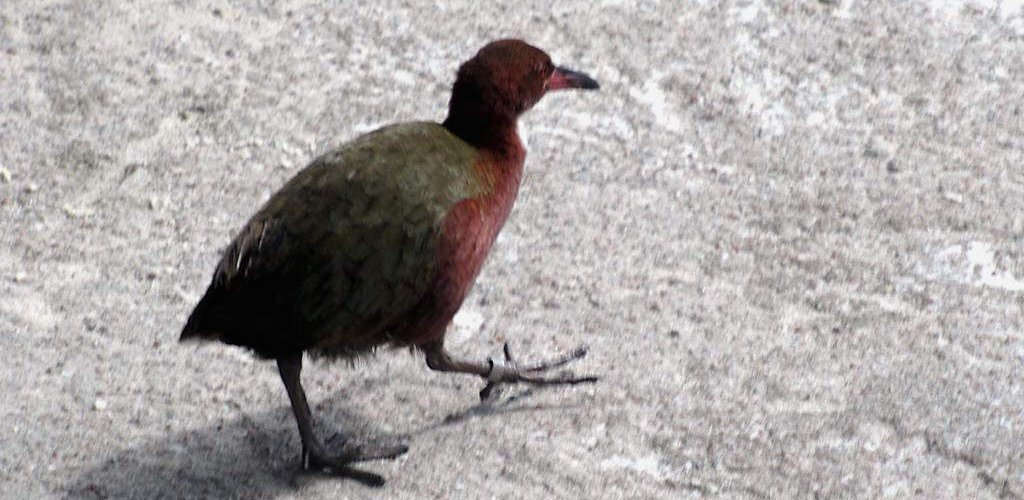
Over the past few days, several people have sent me articles like this one, which makes a rather fantastic claim:
The Aldabra white-throated rail bird was declared extinct, a victim of rising sea levels almost 100,000 years ago.
However, the flightless brown bird has recently been spotted – leaving scientists scratching their heads as to how – and why – the species has come back to life.
What do you conclude from reading that? The article seems to be saying that no one had ever seen this bird before; it was only known from the fossil record. Now, however, living versions of it have been seen, and how they came back from extinction is a mystery. Unfortunately, like many “science news” stories, this one distorts the science to the point that it is deceptive and misleading.
The science that is being distorted comes from a study published last year. A responsible article that describes the study can be found here. While the study and the responsible article don’t distort the science, I do think the conclusion that they draw is not the only one consistent with the data.
Let’s start with the bird that is being discussed. It’s the Aldabra white-throated rail, whose scientific name is Dryolimnas [cuvieri] aldabranus. It lives on the Aldabra atoll in the Indian Ocean and is nearly identical to white-throated rails (Dryolimnas cuvieri) found in other parts of the world, like Madagascar. However, the ones on the Aldabra atoll cannot fly, while the others can. As a result, the flightless birds on the atoll are considered a subspecies of the version that can fly.
While we cannot say for sure, the generally-accepted origin story for the Aldabra white-throated rail is that normal white-throated rails landed on the atoll, and since there were no predators there, they stayed. Since they didn’t need to fly anymore, they evolved into flightless birds over several generations. This makes sense, because when a population of organisms doesn’t need a particular biological trait, mutations can degrade those traits without affecting survivability. In addition, DNA is so incredibly well-designed that over the course of generations, it can “turn off” genes that are no longer used in order to save energy. As a result, it makes sense that these flightless birds are descendants from birds that could originally fly.
Why do these articles discuss the birds being extinct at one point? Because the authors of the scientific study looked at the fossil record of the atoll. Using scientifically-irresponisble dating methods, they came to the conclusion that the atoll was completely underwater about 140,000 years ago. When they looked at fossils they interpreted to be older than 140,000 years, they found two bones that seem identical to the corresponding bones in the Aldabra white-throated rails that currently live on the atoll. Thus, they conclude that these flightless birds lived on the atoll before it went completely underwater.
Well, since the birds couldn’t fly, the authors assume that they all died when the atoll was underwater. However, in fossils that they interpret as being deposited after ocean levels decreased and the atoll was no longer underwater, they found another bone that looks similar to the corresponding bones in white-throated rails that can fly. However, it is heavier and more robust than what is found in those birds, but still lighter than what is found in the flightless Aldabra white-throated rails. In other words, it seems to be “in between” the bone of a normal white-throated rail and a flightless white-throated rail. To them, that gives “irrefutable evidence” (their words) that the Aldabra white-throated rails evolved twice: once before the atoll went underwater, and once after.
While their interpretation of the evidence makes sense and is consistent with all the known data, their case is certainly not “irrefutable.” First, you have to assume that they are interpreting the fossil record correctly. There is a lot of evidence to indicate the earth isn’t anywhere close to 140,000 years old, and if that evidence is correct, then their entire explanation is wrong. Also, even if the earth is as old as these scientists want to believe, the authors’ explanation is not the only one consistent with the data. We know that flightless animals can move from place to place on floating mats of vegetation. This is called “rafting,” and it is used by both evolutionists and creationists to explain the worldwide distribution of certain animals. If the atoll flooded like the authors think, the flightless birds could have survived by rafting. What about that one bone that is “in between” the two subspecies? There are natural variations in all bones. A “more robust” bone from a normal white-throated rail can be explained by natural variation within a population of normal white-throated rails.
The main reason I am writing about this is not to argue with the authors. It’s to point out the deceptiveness of articles like the one I quoted at the beginning of the post. As I have said many times before, do not believe the things you read in the popular press when it comes to science. Most “science journalists” are profoundly ill-equipped to understand science, and usually quite poor journalists as well.




